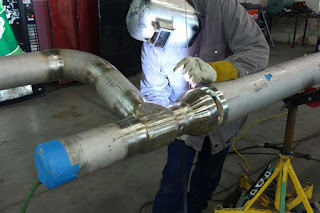Whether you need a custom pipeline for a commercial application or a residential application there are many options available. Pipe Fabrication in California offers a comprehensive solution for all applications. From pre-fabricated piping to pre-manufactured assemblies, we have the products that work for you. Pipe fabricators in San Diego have all the solutions you will need for both commercial and residential applications. Our company can manufacture any size or type of pipe including PVC, Polyethylene, Duct, Copper, Vinyl, Insulated, Rubber, Plank, Straight, and Sandstone, just to name a few.

Pipe fabrication in San Diego is backed by years of experience and technology. We have the raw materials, the expertise, and the skilled labor to provide you with the highest quality product at the most competitive prices. Pipe fabrication using pre-fabricated assembly lines, low-cost components, and high-end engineering will give you the highest value for your money. Pipe fabricators in San Diego can manufacture pipe spools, fitting accessories, couplings, elbows, flanged joints, couplings, pins, sealants, gaskets, washers, lubricants, seals, and accessories like bolts and hoists. The pipe is not only used for its functional properties but also for aesthetic purposes, such as in the interior and exterior applications.
Pipe fabricators in San Diego offer superior design, technical and product support, and superior quality control. In addition to a low minimum cost and high-quality production, we take our customers' requirements and deliver the results they want. Pipe companies in San Diego are committed to continually improving our processes and taking every step to provide the highest quality products to our customers.
Pipe Fabrication in San Diego is an integral part of manufacturing operations. The prefabricated units of piping systems are generally known as pipe spools. They comprise the pipes, fittings, and flanges, which are all mounted together during the manufacturing process so that they can be delivered directly to the construction site. They are safely delivered pre-assembled so as to make them even easier to put together with other tools for attachment, hoists, and various other devices for assembly. Once assembled, they provide the ideal and most cost-effective method of transporting any size of liquid from one point in a manufacturing facility to another. Pipe spools are also commonly used in conveyor belts for moving liquids and materials in large volumes.
A pipe spool normally consists of a number of pipes that are all fed into the unit, which are then fitted into the walls of a standard pipe assembly or raw material pipe. Some pipe fittings and flange fittings are used to join the pipes together as well as to join the raw material pipe into pipes that are suitable for assembling into the complete piping system. This reduces the total amount of time for assembling and eliminates the need to build a complete system from scratch.

Pipe spool systems are suitable for use in many applications and are especially useful for medical applications where the applications require the pipe to be able to withstand extreme temperatures and environments. As the raw material is placed in the spool, the entire assembly is inserted into the pipe and remains stable until it is ready for shipment. Medical applications such as chemotherapy or radiation therapy often require that the assembly remains strong enough to withstand harsh conditions and the pipe, in particular, has proved to be especially advantageous due to its high strength and durability. It is also used in food processing plants where it ensures that the containers carrying perishables are kept at the right temperature and in good condition to ensure the best possible processing without contamination.
View more here: Promec Engineering Pty Ltd
Read More: How Are Pipes Made? The Fabrication Process
















